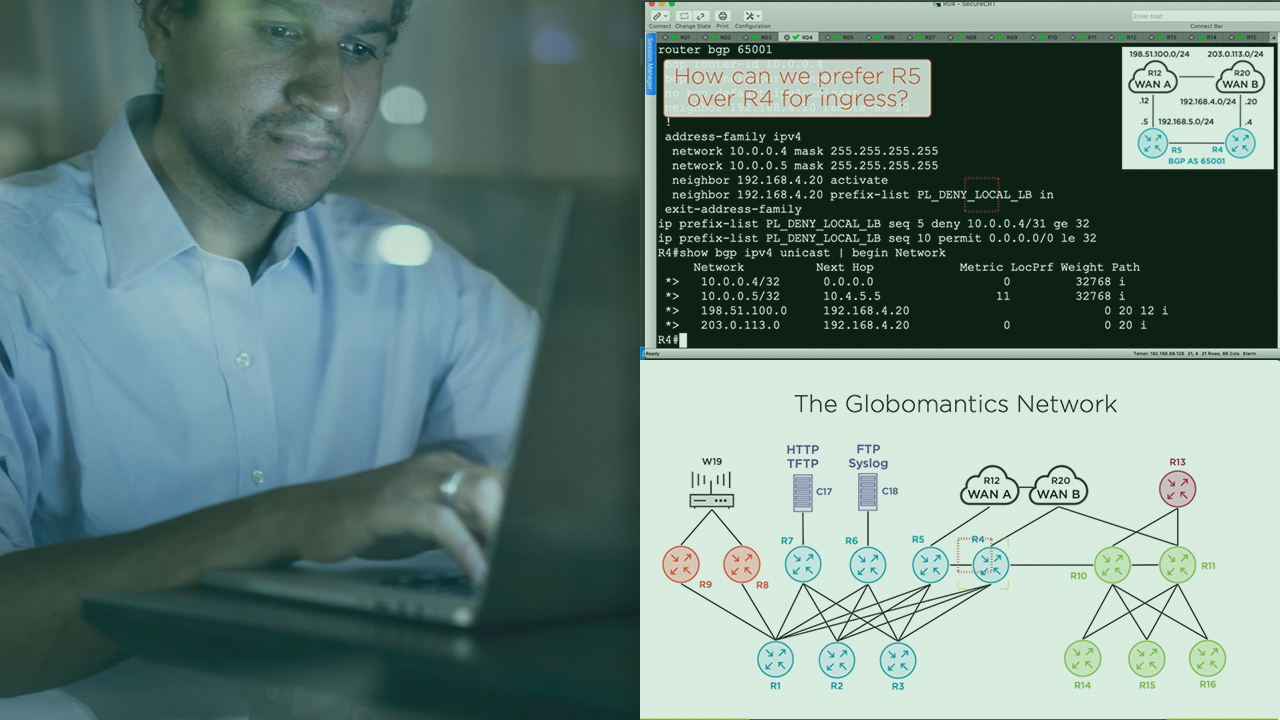- Course
Cisco Advanced Routing: Leaf/Spine Data Centers
Modern data center design is becoming increasingly reliant on layer-3 routing technologies. This course will teach you how to configure and troubleshoot routing protocols and IP services using a large-scale network topology.

- Course
Cisco Advanced Routing: Leaf/Spine Data Centers
Modern data center design is becoming increasingly reliant on layer-3 routing technologies. This course will teach you how to configure and troubleshoot routing protocols and IP services using a large-scale network topology.
Get started today
Access this course and other top-rated tech content with one of our business plans.
Try this course for free
Access this course and other top-rated tech content with one of our individual plans.
This course is included in the libraries shown below:
- Core Tech
What you'll learn
Leaf/spine architectures have exploded in popularity within data centers and enterprise campus networks. In this course, Cisco Advanced Routing: Leaf/Spine Data Centers, you’ll learn to design, configure, and manage a multi-site data center interconnected via layer-3 links. First, you’ll expand your OSPF knowledge by learning about special area types and virtual links. Next, you’ll discover using internal BGP for scalable distribution of IP prefixes within a data center fabric. Finally, you’ll learn how to optimize the network using a subset of common IP services relating to management, monitoring, and security. Most of these topics are discussed using both IPv4 and IPv6 in the context of dual-stacking. When you’re finished with this course, you’ll have the skills and knowledge of Cisco layer-3 data center networking needed to deploy complex routing designs in your work environment.
Cisco Advanced Routing: Leaf/Spine Data Centers
-
Course Prerequisites and Business Context | 4m 54s
-
Leaf/Spine Data Center Design Fundamentals | 2m 22s
-
Demo: Basic OSPF Configuration in a Leaf/Spine Data Center | 3m 8s
-
Demo: Establishing BGP Connections to Multiple WAN Providers | 3m 31s
-
Demo: Attempting to Use BGP MED to Influence Ingress Flows | 3m 58s
-
Demo: Employing BGP AS-path Prepending to Influence Ingress Flows | 3m 47s
-
Customizing Traffic Forwarding with Policy-based Routing (PBR) | 1m 44s
-
Demo: Selecting an Upstream Spine for Telnet Traffic Using PBR | 7m 1s
-
Module Summary | 34s

